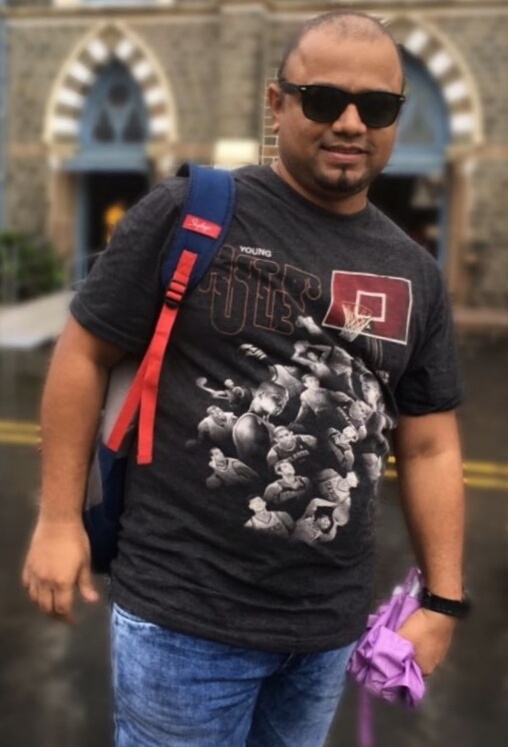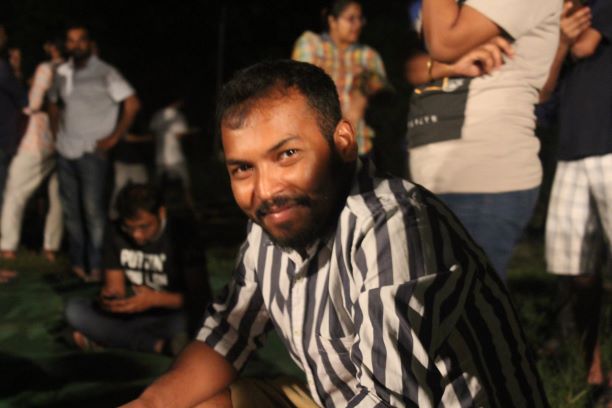Subodh Minto
 The month of March in the year 2014, brought India closer to the next general elections, which were due in April and May. The failure of policies of Indian National Congress led UPA II Government raised hopes of the chief opposition, the Bharatiya Janata Party, a Hindutva (Brahmanic) force which was trying to get back into power since 2004. Congress was on backfoot and the then Samajwadi Party government in Uttar Pradesh was facing severe criticisms for its mishandling of rising communal tension.
The month of March in the year 2014, brought India closer to the next general elections, which were due in April and May. The failure of policies of Indian National Congress led UPA II Government raised hopes of the chief opposition, the Bharatiya Janata Party, a Hindutva (Brahmanic) force which was trying to get back into power since 2004. Congress was on backfoot and the then Samajwadi Party government in Uttar Pradesh was facing severe criticisms for its mishandling of rising communal tension.
The Muzaffarnagar riots, wherein almost 70 people were killed and more than 50,000 displaced, also incidents of rapes and sexual harassment were reported in large numbers, spanned from August to September 2013 and were seen as a failure of the SP government administration. A six member enquiry commission headed by Justice Vishnu Sahay (2015) found the ruling SP’s and the BJP’s clear involvement in the Muzaffarnagar Riots1. This gave a reminder to people of Uttar Pradesh of the previous government led by Bahujan Samaj Party (2007-2012), which under the Chief Minister Km. Mayawati held a riot less record in its tenure of 5 years with better administration. There was no law and order issue even when the Babri Demolition verdict came in 20102. The Bahujan Samaj Party draws its ideological roots from Ambedkarite philosophy of annihilating caste.
Noted civil rights activist and secretary of Citizens for Justice & Peace, Teesta Setalvad, in her facebook post then, recalled the incident that took place in February of 1988, in Bombay. The struggle around publication of Babasaheb Dr. B. R. Ambedkar’s writings and speeches, especially regarding the book ‘Riddles in Hinduism’ where two forces clashed with each other, namely the Hindutva-Brahamanic Shiv Sena and the union of all the Ambedkarite forces, in the State . The Shiv Sena in its aggressive mode of protests brought around 1 lac people on streets burning the said book and pushing the Congress Government to remove the annexure titled ‘Riddles of Rama and Krishna’, from the book. Teesta, further in her post, mentioned about the counter protest by Ambedkarite forces, protestors coming on the streets in numbers no less than 10 lacs, giving a big blow to Shiv Sena and making the Government reinstate the annexure. She regarded Ambedkarism as the only force that could counter Brahmanic-Hindutva ideology which was aiming to rule the nation3.
Riddles in Hinduism
Dr Babasaheb Ambedkar, revered as the champion of rights of untouchables, women, labourers and the chief architect of the Indian Constitution, whose unpublished writings and speeches were collected, redesigned in the form of books in different sets of Volumes, by Dr. Babasaheb Ambedkar Source Material Publication Committee of Maharashtra State. This was in response to the demand made by a delegation of Ambedkarite leaders namely J. V. Pawar, Ramdas Athawale and Datta Jadhav to the Chief Minister of Maharashtra, Shankarrao Chavan on 17/01/1976. The first volume of this series was published by the Department of Education, Government of Maharashtra on April 14th, 1979 (98th Birth Anniversary of Dr. B.R.Ambedkar)4.
 ‘Riddles in Hinduism‘ with Appendix I titled Riddles of Rama and Krishna, was published as a part of this series in volume no. IV, on October 2nd 1987. In the introduction to the book, Babasaheb Dr. B. R. Ambedkar wrote, ‘This book is an exposition of the beliefs propounded by what might be called Brahmanic theology. It is intended for common mass of Hindus who need to be awakened to know in what quagmire the Brahmins have placed them and to lead them on to the road of rational thinking.’5.
‘Riddles in Hinduism‘ with Appendix I titled Riddles of Rama and Krishna, was published as a part of this series in volume no. IV, on October 2nd 1987. In the introduction to the book, Babasaheb Dr. B. R. Ambedkar wrote, ‘This book is an exposition of the beliefs propounded by what might be called Brahmanic theology. It is intended for common mass of Hindus who need to be awakened to know in what quagmire the Brahmins have placed them and to lead them on to the road of rational thinking.’5.
‘Bhai Sangare a leader from Dalit Panthers would often say in his speeches, “Pehle jaano , tab jaake Maano; Jaane bagair maan na murkhta hai.“, that to believe in something , one must put reason and logic first, and a belief without reason is foolishness.’ says Sandeep Walanju, who works for BSP, Mumbai.
It is a well established fact that in order for a society or nation to progress, the citizens must develop capacity for reasoning and take rational decisions. And so the Indian Constitution, in article 51A.(h), directs to one of the fundamental duties of every citizen of India , i.e. ‘ to develop the scientific temper, humanism and the spirit of inquiry and reform.’
It was only a true visionary like Babasaheb Dr. Ambedkar who could lay the foundation of a rational mind which would eventually drive the nation’s progress.
Resistance to Rationality
There was an immediate reaction to the book, and especially to the annexure of the book titled Riddles of Rama and Krishna. The first to comment was Madhav Gadkari, in the ‘Chaufer’ section of Marathi Daily Loksatta, on 30th October 1987. Loksatta is a part of The Indian Express group, then owned by socialist Ram Nath Goenka . The article then brought a series of repercussions, with court cases filed, protests demanding apology from the Chief Minister and burning of copies of the Book. Shiv Sena, who claimed to be the torchbearer of Hindutva got into organizing protests against the volume (no. IV) more aggressively than others, with the party supremo Bal Thackeray calling for ‘Pure Hindu blood’ to come into the morcha, posing challenge before the Ambedkarites6.
The Torchbearer of Hindutva (Brahmanism)
Shiv Sena, was formed on 19th June 1966 as a party fighting for rights of Marathi people in Maharashtra, but slowly turned to Hindutva Ideology which till date it subscribes to.

Its formation can be traced back to the then Congress government’s strategies to counter and make the primary opposition from the labour leaders like George Fernandes lose their grounds, by mobilizing the Marathi workers by instilling cause of Marathi consciousness. Congress Veteran leader Vasantrao Naik, who was also the Chief Minister of Maharashtra, is said to have conceptualized Shiv Sena. In the initial years after inception some people went to the extent of referring it to as Vasant Sena (after Vasantrao Naik).
The Voice of the Have-Nots
 The Republican Party of India was founded on 30th September 1956 as a rechristened form of the Scheduled Castes Federation which was envisioned by Babasaheb Dr. B.R.Ambedkar to give representation and leadership to every section of the society in the newly formed nation. The SCF and later RPI were the chief opposition parties in the beginning years of Independent India.
The Republican Party of India was founded on 30th September 1956 as a rechristened form of the Scheduled Castes Federation which was envisioned by Babasaheb Dr. B.R.Ambedkar to give representation and leadership to every section of the society in the newly formed nation. The SCF and later RPI were the chief opposition parties in the beginning years of Independent India.
Dalit Panthers, in April 1972, started as an emotional outburst against the growing number of atrocities over the Dalits including rape of women and violence against children. J. V. Pawar and Namdeo Dhasal, developed the idea of Dalit Panthers on the lines of the Black Panthers Movement of America.
 It slowly shaped into a political movement filling the vacuum created by the factions of the RPI, building space for a socio-cultural movement, which gave rise to a form of literature, which came to be known as Dalit literature.
It slowly shaped into a political movement filling the vacuum created by the factions of the RPI, building space for a socio-cultural movement, which gave rise to a form of literature, which came to be known as Dalit literature.
The Unconcealed Bigotry
Shiv Sena, after serving the purpose of Congress of destabilizing the primary opposition in the State, changed its course to become a militant organization based on core Brahmanic and Hindutva ideals. Bal Thackeray led Shiv Sena started targeting the Buddhists (or Neo-Buddhists), who were converts from erstwhile Dalit (Mahar) communities of Maharashtra again eyeing political gains for its then ally Congress. “In 1974, what is considered Worli riots, the Shivsainiks attacked only those two buildings, in the Bombay Development Department (B.D.D.) chawls society, Worli, where the Buddhist community resided. And it was aimed at intimidating the other marginalized communities, for the Buddhist community had progressed culturally and educationally and rose as a role model for the other Have-Nots.” recalls, the now 64 years old, Suresh Pawar, who was a part of Dalit Panthers. “The riots sparked after Dalit Panther Leader Bhagwat Jadhav was killed in a fatal attack on a morcha (march), continued for 6 months (since January 1974), in which several Dalits including women and youngsters faced brutalities.” adds Suresh Pawar.
The issue of Namantar i.e. renaming the Marathwada University after Babasaheb Dr. B. R. Ambedkar, gained ground, as the government failed to deliver on it’s own resolution and Ambedkarites along with Socialists raised the demand which eventually became a large statewide movement. Even in such times, the Shiv Sena supremo Bal Thackeray in his utter contempt made harsh comments against the Ambedkarites such as, ”Gharaat nahi meeth, Kashaala havay Vidyapeet” (‘why do these (dalits) need a University, when they can’t even feed themselves’7. These casteist rants of Shiv Sena were never covert and had manifested into violence with the help of the ruling Congress, committed over the activists in the long marches of Ambedkarite organizations to Aurangabad (where the University is situated). The Congress would create chaos and panic in the long march and the Shivsainiks hiding behind bushes would cut the people with swords8.
The March : Beginning
The Riddles Controversy arose when, to Shiv Sena’s call of ‘Pure hindu blood’ for protesting against and demanding ban on the Book, almost 1 lakh people gathered and eventually burnt the copy of the book, symbolizing their anguish. ‘This was also the period, when the Textile mills were closing down because of government’s indifference, and several people were left jobless. Bal Thackeray infamously dared the government, “Jar pustakatun Rama and Krishna warche che parishisht hatawle gele nahi, tar sampurna Mahrashtra petavu” (if the Annexure over Rama and Krishna is not removed from the book, we will set the whole Maharashtra on fire)’. To which Prakash Ambedkar (Bhartiya Republican Paksh) replied, “Petvayche asel the Berozgar lokanchya gharatlya chuli petva” (if you wish to light a fire, then light up the stoves at the homes of the jobless’), recalls Niranjan Wasnik, a social activist. Acknowledging the ‘anguish’ of the ‘Hindu blood’, the Congress Government of Maharashtra ‘immediately’ ordered removal of the Annexure I from the book.
The Ambedkarites across Maharashtra state then agreed on a joint protest demanding the reinstating of the annexure in the book ‘Riddles..’ . Earlier, “Morchas were also organised by Ambedkarites at District and Taluka levels with the demand put before the Collectors and local authorities “, mentions Suresh Pawar. Now under the banner of Dr. Babasaheb Ambedkar Vichar Sanwardhan Samiti ( Dr. Babasaheb Ambedkar Thoughts Promotion Committee) all the Ambedkarite Parties and groups including RPI and Dalit Panthers were joined by organizations of Nomadic tribes and OBC communities. An appeal was made by the committee to the masses to join in large numbers for the protests on 05th February 1988 which was named ‘Bheem March’9.
The March: Anatomy
The march began from Azad Maidan near Boribunder station of Mumbai city which headed towards Kala Ghoda, Fort. The processions were well managed by leaders like R. S. Gavai, Namdeo Dhasal, Raja Dhale, Prakash Ambedkar, J. V. Pawar, Arjun Dangle, Jogendra Kawade with Avinash Mahatekar, Bhai Sangare, Jaydev Gaikwad and Neelam Gorhe mobilizing the masses.
Women from across regions participated in large numbers in the Bheem Morcha. Participants of the morcha came not just from districts like Satara, Kolhapur, Jalgaon, Pune, and regions like Vidarbha, Marathwada of Maharashtra State but there were a lot of Ambedkarites joining from the other Indian states of Madhya Pradesh, Uttar Pradesh, Tamil Nadu , Rajasthan and Karnataka10. Suresh Pawar recalls, “ …there were almost 10 lacs Ambedkarites in the morcha. The massive turnout was evident from the fact that road from the Victoria Terminus (present Day Chatrapati Shivaji Terminus) to the Central Telegraph Office , Fort was all filled with the morcha participants who were heading towards Azad maidan.”
The March: Resonance
The Morcha ended peacefully, the participants returned towards the railway station, and no shops at the railway stations were kept closed at any point of the time during the whole duration of the morcha. Noteworthy is, mentions J. V. Pawar in his book11, that had this been a Shiv Sena morcha, then those shops would have to be kept closed as there is always a chance in a Shiv Sena protests of antisocial elements causing damage to public properties and shops.
Such a massive protest which took place in the heart of the state capital, made the Government take cognizance of the issue. The very next day, Chief Minister Shankarrao Chavan met the delegation of Dr Babasaheb Ambedkar Vichar Sanwardhan Samiti, which led the successful ‘Bheem March’.
Although the protests went peacefully, some miscreants spread the rumor of the protestors vandalizing the sculptures mounted at the Hutatma Square (which are symbols of the Samyukta Maharashtra Samiti’s movement for separate Marathi State of Maharashtra). Anticipating a setback over the Riddles issue, the Shiv Sena, tried to capitalize over this rumor. Chhagan Bhujbal, then a close aide of Bal Thackeray, held a ‘Purification’ ritual at the Hutatma Square, with Ganges water and Gayatri Mantra chants.
The Government of Maharashtra accepted the demands put forth by the delegation in the state assembly, finally reinstating the Annexure I in the Book, but with addition of a disclaimer that ‘Government does not concur with the views expressed in this Chapter.’12.
The Bheem March was to a great extent a groundbreaking event, which channelized the discourse on logic and rationality. The recent murders of rationalists where such voices are muted, has raised concerns over the debate of rationality, which Bheem March had raised 29 years ago. This march was a benchmark in the history of modern India, but which the mainstream narrative failed to acknowledge.
~
Notes
(1) Muzaffarnagar riots: Inquiry panel blames both BJP, SP for violence; political blame game ensues., www.dnaindia.com, September 24th,2015
(2) Babri verdict: Mayawati meets Governor on fallout, m.timesofindia.com, August 30th, 2010
(3) Teesta Setalvad in a phone conversation acknowledged about her facebook post.
(4) J.V.Pawar, Ambedkarite movement after Ambedkar, Vol.V ,p.155
(5) Dr Babasaheb Ambedkar Writings and Speeches, Volume IV, p. 5
(6) J.V.Pawar, Ambedkarite movement after Ambedkar, Vol.V, p.155,156
(7) J.V.Pawar, Ambedkarite movement after Ambedkar, Vol.V, p.156
(8) Eknath Awad, Great Bhet, Telecasted on January 13th 2013, on IBN Lokmat
(9) J.V.Pawar, Ambedkarite movement after Ambedkar, Vol.V, p.161
(10) Khawallelya Dariyache Darshan Mumbaichya Rastyawar Jhale, 5 lakh Bheemsainkancha Apurva March, Daily Navakaal, February 6th, 1988, reprinted in the book Ambedkarite movement after Ambedkar, Vol.V, p.162 by J V Pawar
(11) J.V.Pawar, Ambedkarite movement after Ambedkar, Vol.V, p.165
(12) Dr. Babasaheb Ambedkar Writings and Speeches, Vol.IV, p. 323
Images courtesy: internet.
~~~
Subodh Minto hails from Nagpur and is pursuing his Masters in Media and Cultural Studies from the Tata Institute of Social Sciences, Mumbai. His areas of interests are Navayana Buddhism and Buddhist Aesthetics.










